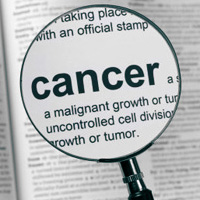Acute kidney injury strongly influences renal function after radical nephroureterectomy for upper tract urothelial carcinoma: A single-centre experience

Accepted: October 15, 2020
All claims expressed in this article are solely those of the authors and do not necessarily represent those of their affiliated organizations, or those of the publisher, the editors and the reviewers. Any product that may be evaluated in this article or claim that may be made by its manufacturer is not guaranteed or endorsed by the publisher.
Authors
Objective: The aim of our study was to investigate frequency and predictors both of postoperative acute kidney injury (AKI) and renal function decline in a population of consecutive upper tract urothelial carcinoma (UTUC) patients who underwent radical nephroureterectomy (RNU).
Materials and methods: Between October 2014 and February 2020, 93 patients underwent RNU at our Institution. After considered exclusion criteria, 89 patients were selected. Perioperative clinical factors were retrospectively collected. Estimated glomerular filtration rate (eGFR) was calculated using the Chronic Kidney Disease Epidemiology Collaboration (CKDEPI) equation. We defined AKI as an increase in serum creatinine by ≥ 0.3 mg/dl or a 1.5-1.9-fold increase in serum creatinine from baseline to I post-operative day (POD). A significant renal function reduction was defined as an eGFR reduction of 40% from baseline at discharge and at last clinical evaluation. Frequency of AKI and eGFR decline was investigated. Association between perioperative clinical factors and AKI and eGFR reduction at discharged and last follow-up was studied using univariate and multivariate models.
Results: AKI was detected at I POD in 45 patients. On multivariate analysis, pre-operative eGFR was an independent predictor of AKI (OR 1.03; p = 0.042). Further, AKI was found to be a significant predictor of eGFR reduction ≥ 40% at discharge at univariate analysis (OR 19.42; p = 0.005) and at multivariate analysis (OR 12.49; p = 0.02). In a multivariate logistic regression model post-operative AKI (OR 5.18; p = 0.033), lack of ipsilateral preoperative hydronephrosis (OR 0.17; p = 0.016), preoperative eGFR (OR 1.04; p = 0.047) and antiplatelet therapy (OR 5.14; p = 0.018) were found to be independent predictors of an eGFR reduction higher than 40% at last clinical evaluation made at a median of 15 (IQR 5-30) months.
Conclusions: In our cohort, AKI was present in almost 50% of patients after RNU and it was a strong predictor of renal function decline after RNU.
How to Cite
PAGEPress has chosen to apply the Creative Commons Attribution NonCommercial 4.0 International License (CC BY-NC 4.0) to all manuscripts to be published.

 https://doi.org/10.4081/aiua.2021.1.9
https://doi.org/10.4081/aiua.2021.1.9



